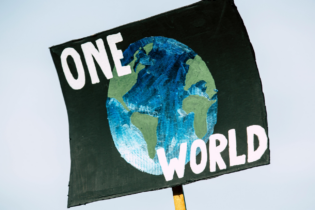
Study results published in renowned science journal Nature indicate that a strengthened resolve of the Paris climate agreement is needed
Individual country pledges to reduce greenhouse gas emissions would need to be strengthened in order to limit future climate change to well below the 2°C limit included in the Paris climate agreement, according to a new assessment.
Pledges made for the Paris agreement on climate change last winter would lead to global temperature rise of 2.6 to 3.1°C by the end of the century, according to a new analysis published in the journal
Nature. In fact, the entire carbon budget for limiting warming to below 2°C might have been emitted by 2030, according to the study.
“The Paris Agreement was a historical achievement for the world’s response to climate change, aiming at limiting warming to below 1.5°C and 2°C. It puts in place a flexible framework for a long-term transformation towards a low-carbon society. But our analysis shows that these measures need to be strengthened in order to have a good chance of keeping warming to well below 2°C, let alone 1.5°C,” says Joeri Rogelj, a researcher at the International Institute for Applied Systems Analysis (IIASA) who led the study.
Two degree impacts
The 2°C target aimed to limit future climate change to an average temperature increase of below 2°C above preindustrial levels, as research suggested that this could help avoid some of the most dangerous impacts of climate change. The target was agreed upon by 190 countries at the Cancun climate meeting in 2010. In Paris last December, countries strengthened this target by requiring temperatures to be limited to “well below” 2°C and furthermore agreed that they should strive to limit temperature rise even further, to 1.5°C. Some studies suggest that even two degrees of warming would lead to unacceptable impacts, particularly in vulnerable countries such as island nations and least-developed countries.
The new study provides an in-depth analysis of the pledges which countries submitted at the Paris climate meeting in December, the Intended Nationally Determined Contributions (INDCs). In order to assess what would happen after the pledge period ends in 2030, the researchers assumed that emission reduction efforts would be continued at the same level of effort after 2030. Based on these projections, and using a variety of different models, they estimated that median global temperatures would reach 2.6 to 3.1°C by 2100. The researchers also examined what additional measures would be necessary after 2030 to limit future temperature rise to 2°C or 1.5°C in 2100.
Way forward
Niklas Höhne, a researcher at the NewClimate Institute in Germany and Wageningen University who also worked on the study, says, “To go the rest of the way, we would need to assume much more stringent action after 2030, which leads to emissions reductions of about 3-4% per year globally. But in practice, switching to such stringent reductions right after 2030 would be challenging, and require time—that means that in order to ensure a chance of meeting these targets, we need significant further action from countries before 2030.”
Reference
Rogelj J, den Elzen M, Hoehne N, Fransen T, Fekete H, Winkler H, Schaeffer R, Sha f, Riahi K, Meinshausen M (2016). ‘Paris Agreement climate proposals need a boost to keep warming well below 2°C’.
Nature. doi:10.1038/nature18307 (Advance copy available upon request)








